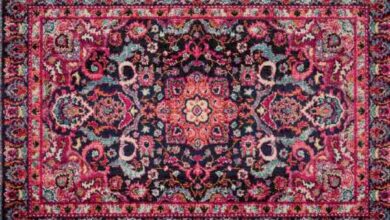Roof insulation: Thermal insulation technology using mineral wool
Since the roof accounts for up to a third of the heat loss of a private house, So roof insulation is carried out carefully. Moreover, in the case of a classic pitched roof, there may be several options for insulation.
Roof insulation options
The pitched roof itself is insulated during the construction of the attic. The thermal insulation material is placed between the rafters and covered with vapour and waterproofing films as part of the roofing “pie”. The roofing “pie” layers are arranged from bottom to top in order to increase vapour permeability: vapour barrier, insulation, and waterproofing membrane.
Proper roof insulation requires the organization of air exchange, for which air gaps (3-5 cm) are left in the roofing “pie”, ensuring condensation removal from the insulation and the under-roof space.
Between the insulation and the waterproofing film, which is laid overlapping, a counter-lattice is placed along the length of the rafters to ensure ventilation. You can do without counterlathing if you replace the waterproofing with a different counterlathing. This membrane is laid directly on the insulation.
The roofing “pie” is completed by placing a sheathing on top of the waterproofing film on which the roof is laid. A vapour barrier is applied on the inside (also overlapping). The joints of vapour and waterproofing insulating films are sealed.
If the attic is left cold, insulation is done along the top floor, laying thermal insulation on it. In this case, the vapour barrier is attached from the side of the room and from the side of the under-roof space – waterproofing.
Also Read: Crafting Cozy Vibes: Your Simple Living Room Makeover in 2024
Choosing insulation for pitched roofs
Mineral wool insulation is used to insulate pitched roofs. They provide reliable thermal insulation and environmental safety and are characterized by non-flammable properties and normal sound absorption. At the same time, mineral wool works well only if moisture does not accumulate, so insulating films are included in the roofing “pie”.
Both roll and slab materials are used for roof insulation. Semi-rigid insulation is used on steep slopes, and soft insulation is used on flat slopes. In this case, the soft insulation must be carefully secured, not gradually slipping.
The recommended insulation thickness for a pitched roof is 250-300 mm for the whole of Ukraine except the south and Transcarpathia (the first temperature zone); 150-200 mm is sufficient for the second temperature zone.
Reinforced polyethene films are used as a vapour barrier, and perforated polyethene films or breathable diffusion membranes are used as waterproofing.
Upgrade your comfort and save on energy bills! Discover the best insulation installers in Wollongong and enjoy a warmer winter and cooler summer. Get a free quote today!
Laying insulation in roof slopes attic insulation
To insulate a pitched roof, install insulation between the rafters. You need to understand that the thickness of the thermal insulation is limited by the thickness of the rafters, which will also act as cold bridges. If an additional frame is installed perpendicular to the rafters for a separate insulation layer, the influence of cold bridges will be minimized. Thermal insulation is laid in 2-3 layers without gaps with overlapping joints. Fix the thermal insulation with non-metallic fasteners.
The roof insulation is installed according to a closed thermal circuit without the appearance of uninsulated areas. To do this, ensure no gaps between the insulation parts and pay attention to problem areas. It is necessary to provide reliable insulation of the joints of walls with ceilings and roofs, slopes and window sills of attic windows, exits to balconies, places where communications are laid, etc
Also Read: Conducting a Brand Symphony with Integrated Marketing Solutions
Mistakes when insulating the roof
The most common mistakes when insulating a roof relate to the wrong choice of insulation and incorrect arrangement of the roofing “pie”. So, when buying insulation, you must consider its service life and refuse to purchase materials with less than ten years of durability. Otherwise, the insulation will have to be replaced after some time due to shrinkage, loss of strength or other problems during its operation.
In addition, when installing insulation, cold bridges may appear. Using low-rigidity material causes incorrect choice of insulation sizes, poor fastening, and slipping of insulation and insulating films.
To avoid the appearance of cold bridges due to gaps between the insulation and the rafters, the width of the insulation should be 10-50 mm greater than the width of the rafters opening. When installing the insulation by surprise, it is pressed in, and then it fits more tightly to the rafters. Any gaps that remain after installation should be sealed with remaining insulation.
A correct choice for roof insulation thickness also leads to deterioration of the roof’s thermal insulation. If the insulation occupies the space of the ventilation flow, air movement stops. As a result, moisture appears, a decrease in the thermal insulation characteristics of the material, mould formation, rotting and corrosion of the roof’s structural elements.
Improper roof insulation can lead to the destruction of its structure or interior decoration. And with proper thermal insulation, the insulation should last as long as the entire roof.s



